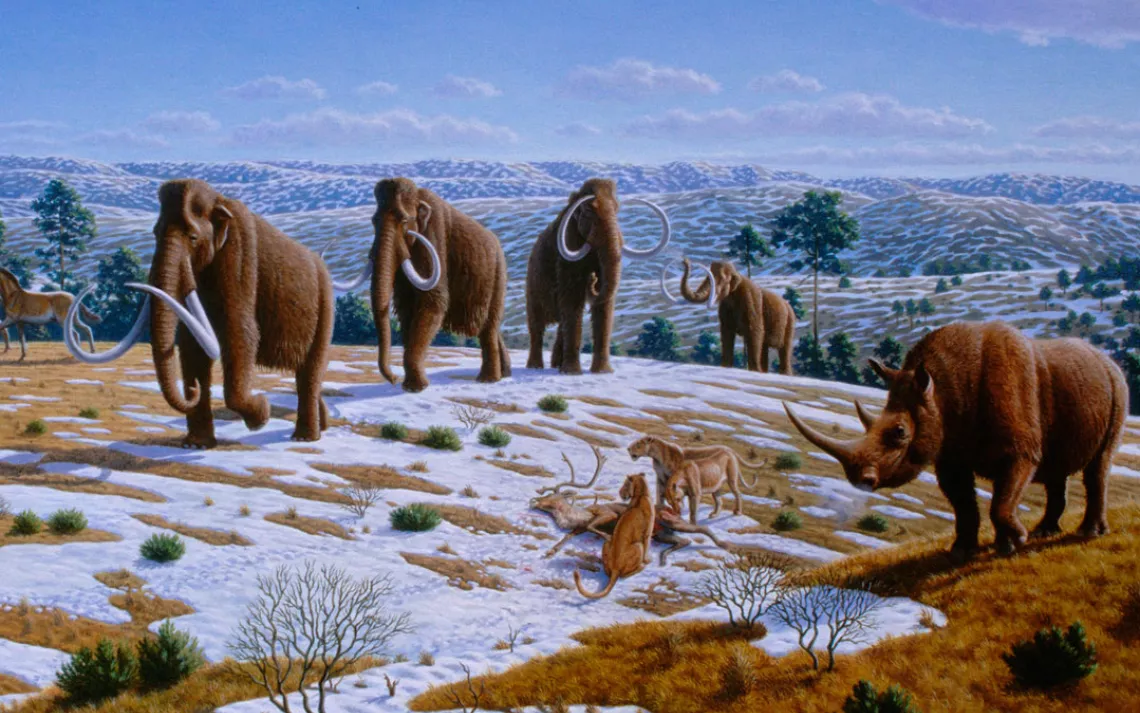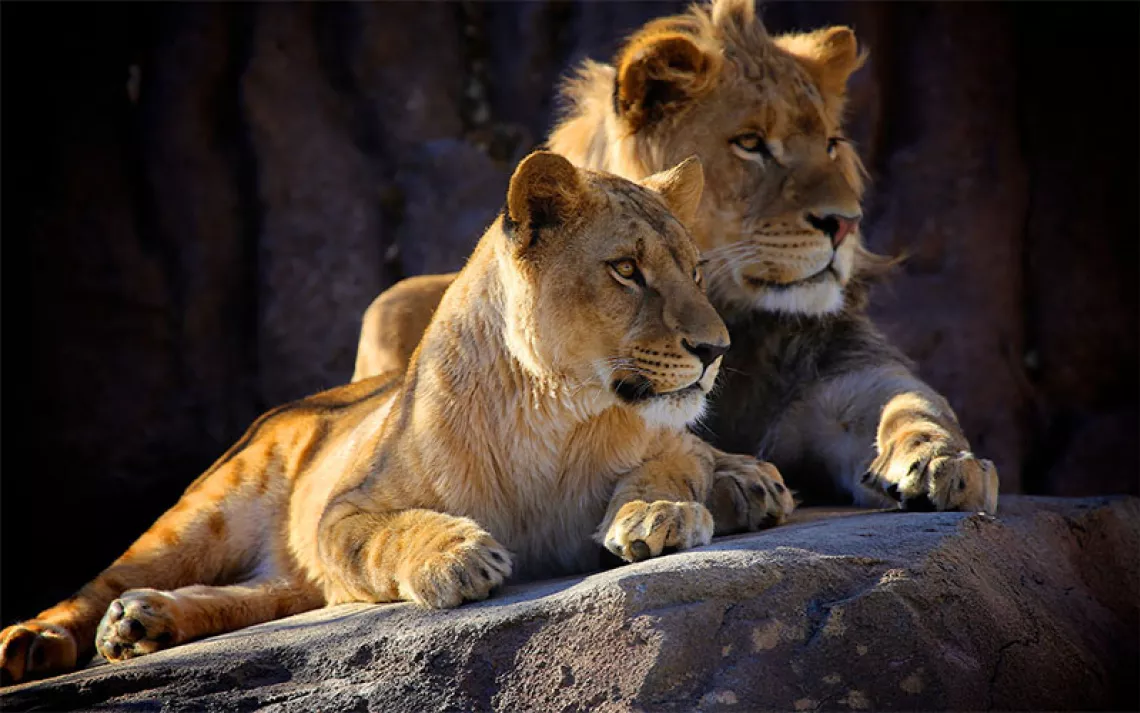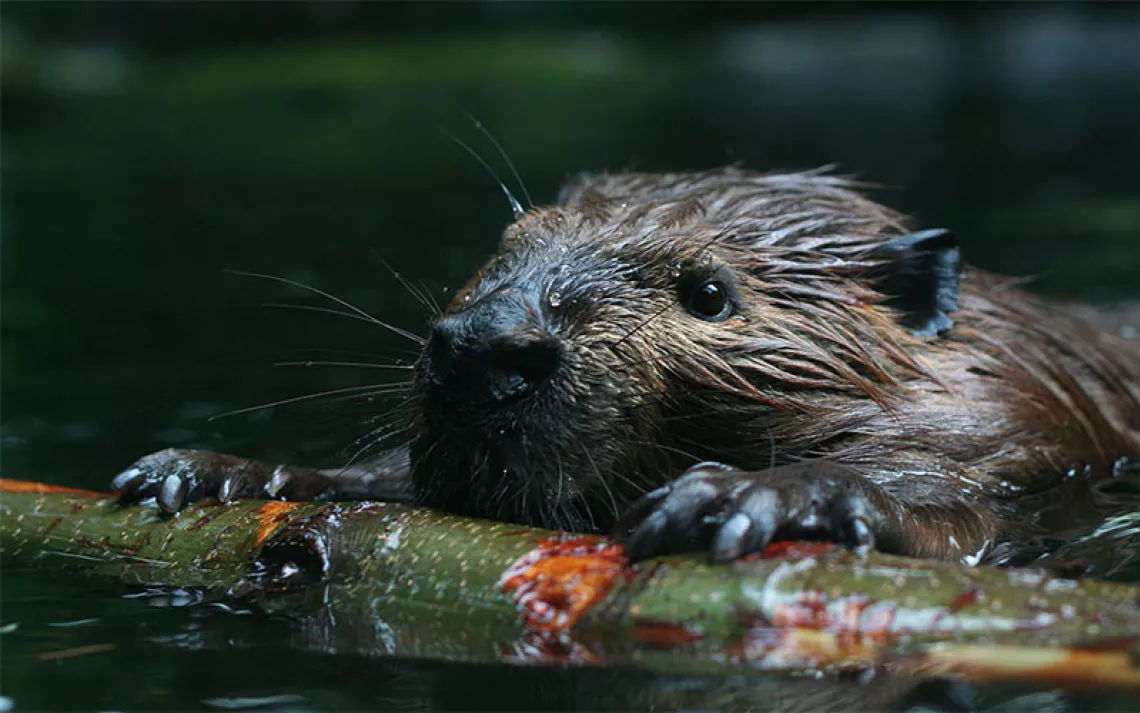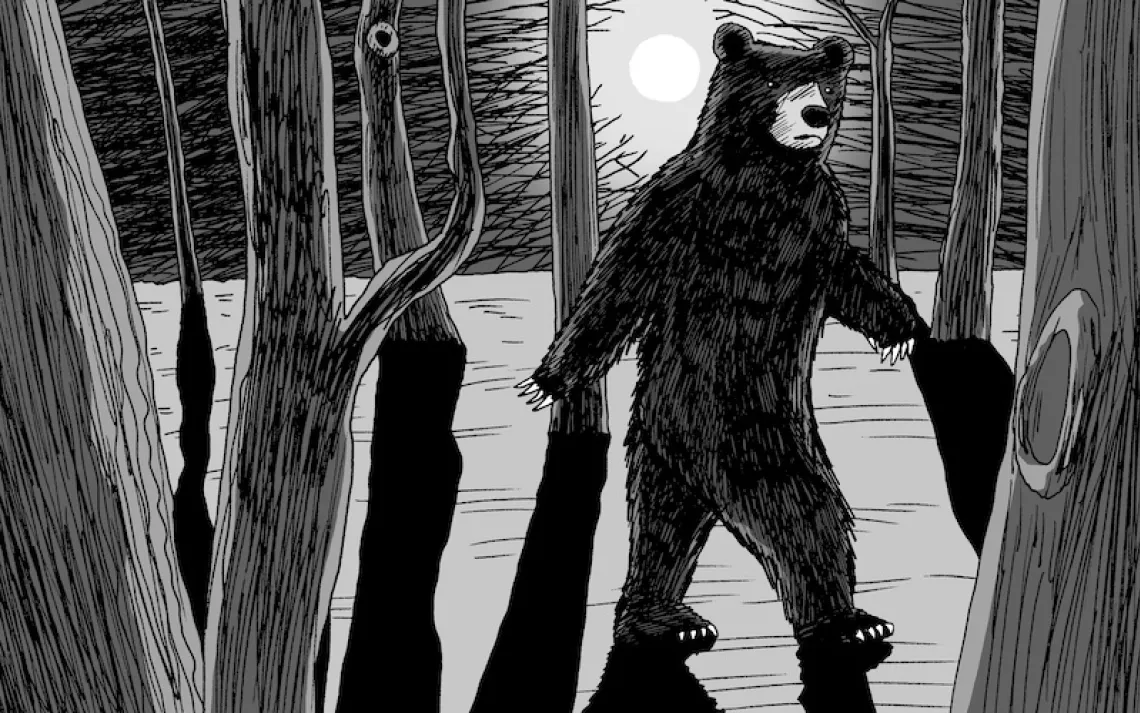Contemplating De-Extinction
Some scientists think the era of reviving and returning extinct species to the wild is closing in fast. But which animals should come back?

Mammoths | Illustration by Mauricio Anton/PLOS Biology
It was once considered science fiction, but some scientists hope that in about a decade or so tourists may take mammoth-watching safaris in the Canadian Arctic, the passenger pigeon could return to skies over the American Midwest, and the heath hen might boom its way across Martha’s Vineyard once more. That’s because the science of de-extinction—using preserved genetic material to “revive” extinct species—is advancing at a rapid clip.
There are major de-extinctions well underway, like Revive & Restore’s projects to re-create the passenger pigeon and heath hen. George Church at Harvard is quickly making progress on bringing back the woolly mammoth, and researchers recently met to discuss reviving the great auk, a large penguin-like diving bird that once lived across the North Atlantic. Many other plants, insects, birds, and mammals are also under consideration. If things go well, bringing species back from the void could become a valuable ecological tool.
Or at least that’s what Douglas McCauley, an ecologist at the University of California at Santa Barbara hopes. He and several colleagues recently published a paper in the journal Functional Ecology laying out guidelines for selecting species for de-extinction. The goal, they say, is to focus on species that could have a meaningful ecological impact and “to ensure de-extinction does not simply manufacture functionally ineffectual eco-zombies.”
“This is coming soon, and we want it to come out in the right way,” McCauley says. “Like with any new conservation tool, we want to engage with it intelligently.”
This isn’t the first time researchers have discussed which animals should be pulled back from the void. The question of whether we should bring back extinct animals, and if so, which ones, has played out in the media and academic journals for the last half decade. A 2014 paper in Trends in Ecology & Evolution lays out a 10-question criteria based on species reintroduction guidelines published by the International Union for the Conservation of Nature, the body that tracks endangered species. The extensive questionnaire asks whether a de-extinct species would be able to survive in modern ecosystems. McCauley’s more succinct guidelines ask whether a species would have a purpose in that ecosystem and serve an ecological function.
“I get it. I love megafauna like everyone else and would probably buy tickets to see a mammoth,” he says. “But what really drives me is an all-encompassing concern that we in conservation and our allies in genetics need to take this process seriously. It’s not time to create curiosities and put them in zoos. It’s time to think about how the science can be useful for increasingly damaged ecosystems.”
McCauley and his team lay out three primary criteria for which species should get the de-extinction treatment. First, the candidate species should have low levels of functional redundancy. For instance, bringing back a leaf-cutter ant species in the tropics might not be a good choice if other ants or insects have filled its niche. Bringing back a bat that serves as the only pollinator of several endangered plants might make more sense.
They also suggest that researchers focus on species that went extinct relatively recently. Over hundreds or thousands of years, ecosystems change and may no longer be appropriate for resurrected species. The habitat they need to survive may have gone extinct as well. “Neglecting the complexities of ecosystemic evolution will relegate de-extinction to operating like a futile attempt to integrate a piston from a 1910 Ford Model T into a 2017 Tesla electric car,” McCauley writes.
Lastly, the team writes that the selected species should have a chance of returning to functionally meaningful levels. For instance, it may be interesting to restore the thylacine, the Australian marsupial wolf that was hunted into extinction by 1936. Having one or two hunting a few small mammals would not fulfill the guideline; having enough to impact the entire ecosystem might.
According to this analysis, neither the passenger pigeon nor the woolly mammoth are ideal restoration candidates. Instead, the team suggests the Christmas Island pipistrelle bat (Pipistrellus murrayi), which went extinct in 2012, or the Réunion giant tortoise (Cylindraspis indica), which was a key disperser of plant seeds on the Indian Ocean island.
Ronald Sandler, who studies environmental ethics at Northeastern University and is the author of the 2013 book The Ethics of Species, says while de-extinction may be used primarily as a tool for ecology, there are plenty of other reasons for bringing back species. “Just from the science side, researchers can use these projects to develop tools and techniques that might have other important applications,” he says. “Some people might be interested in restoring a species that has cultural or social value. I can imagine people being interested in de-extinction for economic reasons.”
He also says some species might not have a high functional value but can promote other positive conservation values. Restoring habitat and creating new protected areas for the heath hen, for instance, has ancillary benefits for many other species. Ben Novak, the lead researcher at Revive & Restore’s Great Passenger Pigeon Comeback project, agrees. “The heath hen is not a keystone species or ecosystem engineer,” he says. “But there is a community of people interested in restoring it. It’s a flagship species that gets people interested in restoring habitat and stimulates the attention to make it happen. I personally would shy away from doing too many of those types of projects, but there’s a reason the WWF has a panda on its logo. It’s not an ecologically critical species, but protecting it protects a lot of other species in a biodiversity hot spot.”
Novak says McCauley’s paper hits on salient points. But he wholeheartedly disagrees that the woolly mammoth and passenger pigeon don’t fit restoration criteria. Passenger pigeons, by the massive size of their roosting flocks, opened a patchwork mosaic in the forest canopy and added nutrients to the forest floor. He says after crunching the numbers, he thinks they could get pigeon numbers to levels that have meaningful impacts on ecosystems. The mammoth, too, he argues, creates disturbances that stimulate seeds of grasses to grow in the higher-latitude tundra. Over time, restoring mammoths could radically alter the ecosystem and help it deal with climate change. They may not patch a hole in the ecosystem right away, but they may have positive effects over time. “My personal motivation would be to target species that provide long-term benefits for ecosystems,” he says. “I think the mammoth and the passenger pigeon both do that.”
 The Magazine of The Sierra Club
The Magazine of The Sierra Club







